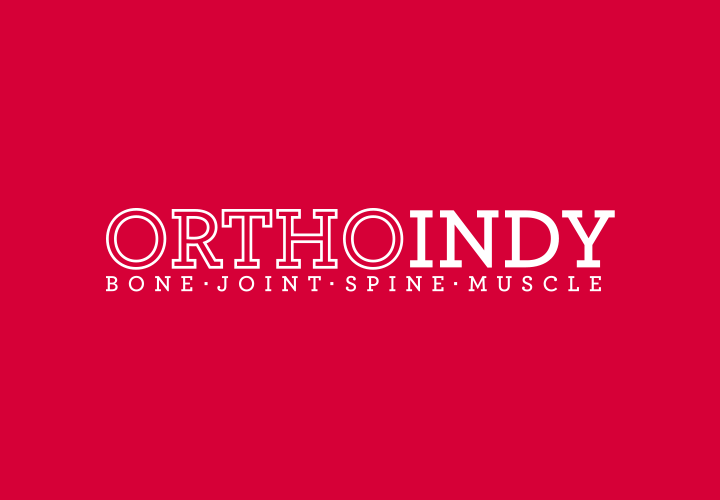According to WebMD, metatarsalgia, or ball of foot pain, is common in athletes who participate in sports that involve running and jumping. This includes track and field, cross country, soccer, football, softball and baseball.
OrthoIndy foot and ankle surgeon, Dr. David Myer, explains common causes, symptoms and treatment options for metatarsalgia.
What is metatarsalgia?
If you are experiencing pain in the ball of your foot, you may have a common overuse injury called metatarsalgia. When you develop metatarsalgia, the ball of your foot may be in pain and inflamed. If you are involved in activities involving a lot of running and jumping, you could be prone to it.

Foot Anatomy
The feet contain nearly one-fourth of all the bones in your body, which provide you with support and movement. There are 26 bones in one foot: 14 toe bones, five long toe (metatarsal) bones and seven tarsal bones. There are nerves that go out to your toes. The nerves on the bottom of the feet run between the bones that make up the ball of your foot.
The ball of your foot is the part of your foot’s sole right behind your toes. When it gets irritated, it causes inflammation and pain under your foot.
Metatarsalgia Causes
The main cause of metatarsalgia is overuse due to working on hard surfaces or athletics. Many athletes are prone to this type of injury because they don’t rest or stretch enough in between exercises.
“People who tend to be the most prone to metatarsalgia include individuals to have lost some of the padding under the ball of her feet, those who work on hard surfaces and are on their feet for extended periods of time, as well as individuals to have tight gastrocnemius muscles and Achilles tendons,” Dr. Myer said. “Metatarsalgia can also affect individuals who have hammertoe deformities.”
Metatarsalgia Symptoms
“The main symptoms of metatarsalgia include pain under the ball of the foot that tends to be worse with weight-bearing and better when not weight-bearing on the feet,” Dr. Myer said. “This also tends to be worse on hard surfaces and in bare feet or shoes that are not well cushioned.”
Some other common symptoms include:
- Sharp or shooting pain, numbness or tingling in your toes
- Feeling like you have a pebble in your shoe
- Pain worsens when you walk, run or jump
Metatarsalgia Diagnosis
To determine whether you have metatarsalgia, your foot and ankle physician will ask you for a complete medical history, ask you to describe your symptoms and conduct a physical examination. An X-ray, or MRI is usually necessary to confirm the diagnosis for your foot pain.
MAKE AN APPOINTMENT WITH AN ORTHOINDY FOOT AND ANKLE SPECIALIST
Metatarsalgia Treatment
Metatarsalgia is almost never treated with surgical methods. If one metatarsal is heavily affected or if you also have hammer toes deformity, surgery can relieve some of the pressure on your foot, according to Dr. Myer.
Common treatment options include:
- Daily calf and Achilles Tendon stretches
- Using extra padding (metatarsal pads)
- Orthotics or well cushioned shoes are the best shoes for metatarsalgia
- Avoid bare feet
- Avoid high impact activities for extended amounts of time
If your condition doesn’t improve after implementing nonsurgical treatment, you may have another underlying condition and should consult your foot and ankle doctor for further treatment.
“It can take several months to notice any great relief,” Dr. Myer said. “It is extremely unusual to not experience any sort of relief for needing any sort of surgical intervention. Surgeries almost always performed if there is a combination of both metatarsalgia and forefoot deformity (bunions, hammertoes), and almost never if there is just isolated pain under the ball of the foot.”
Metatarsalgia Prevention
Metatarsalgia can be prevented easily if you treat your feet right. According to Dr. Myer, preventative measures to keep in mind include:
- Wear appropriate fitting shoes
- Make sure your shoes are well cushioned
- If you already have pain, lower your activity level
- Dedicate daily stretching to your calf muscle
“Conservative management of metatarsalgia is almost always successful and typically utilizes a combination of activity modification, dedicated daily stretching and off-loading pads or orthotics as well as appropriate shoe selection,” Dr. Myer said.
To schedule an appointment with Dr. Myer, please call 317.884.5174 or learn more about OrthoIndy foot and ankle treatment and Dr. Myer.
Schedule an Appointment with a Foot Doctor
Your well-being is important to us. Click the button below or call us to schedule an appointment with one of our orthopedic specialists. If your injury or condition is recent, you can walk right into one of our OrthoIndy Urgent Care locations for immediate care. For rehabilitation and physical therapy, no referral is needed to see one of our physical therapists.





